Falafel With Tahini Sauce
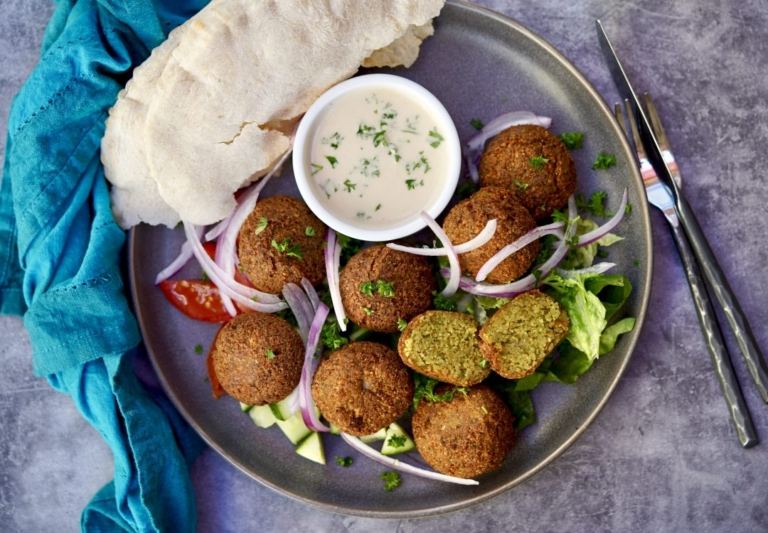
My whole family loves falafel with tahini sauce. My husband and I both grew up eating falafel in NYC. In Brooklyn, we lived near a little family-run restaurant that made an amazing homemade falafel sandwich people would line up for blocks to get. I still miss it 13 years later. Here in Northern California, there is a local place with decent falafel our boys have grown up eating, but recently we have all become extremely fond of the homemade version.
During lockdown, I began making homemade falafel with tahini sauce on a steady clip. But the hardest part about making it was securing the dried chickpeas. Chickpeas, like other beans, flour, yeast, and toilet paper, were all considered “hot commodities“. To avoid this, I began buying dried chickpeas in bulk and my problem was solved. As a result, fresh falafel with tahini quickly got integrated into our favorite meal repertoire. This is not my falafel recipe, it is Tory Avey’s recipe, and it’s a keeper. I have made a few minor changes, but the original can be seen here.
Falafel, for those unfamiliar, is a deep-fried ball or patty made from ground chickpeas, fava beans, or a combination of the two. Considered a traditional Arab food, falafel is commonly served in pita bread (recipe for that coming soon), which acts as a pocket, or wrapped in a flatbread known as lafa. The falafel balls are topped with tomatoes, cucumbers, onions, pickled vegetables, hot sauce, and spreads, and drizzled with tahini-based sauce.
The History of Falafel
The exact origin of falafel is unknown. One common theory is that the dish originated in Egypt and was eaten by Copts as a replacement for meat during Lent. Since Alexandria is a port city, the dish was exported to other areas in the Middle East. Some believe the dish later migrated northwards to the Levant, where the switch from fava beans to chickpeas was made. But others believe falafel originated during Egypt’s Pharaonic Period, in the Indian subcontinent, known for making various chickpea-based dishes.
In North America, before the 1970s, falafel was found only in Middle Eastern, Mediterranean, and Jewish neighborhoods and restaurants. Today, this popular dish is now considered a common food in many cities throughout North America. Falafel has also become popular among vegetarians and vegans alike, as it’s a great source of protein.
Health Benefits of Chickpeas
Health-wise, you can’t get much better; falafel is high in protein, fiber, and complex carbohydrates. Chickpeas themselves are low in fat contain no cholesterol and contain a vast amount of nutrients including; iron, magnesium, phosphorus, potassium, zinc, copper, manganese, vitamin C, thiamine, pantothenic acid, vitamin B, and folate.
This recipe is not difficult, but you MUST use dried chickpeas, canned chickpeas will not cut it, so don’t waste your time trying. The real trick with working with dried chickpeas is planning. So, for this recipe, begin soaking the chickpeas the night before. It’s that simple. The next day, the chickpeas are ready to go and you can prep your falafel mixture. This is what I do and I just cook off the falafel balls when we’re ready to eat so they are fresh. If you ask my boys, there is nothing better.
Falafel With Tahini Sauce
Ingredients:
For the Falafel:
- 1 pound dry chickpeas/garbanzo beans (about 2 cups)
- 1/2 cup yellow onion, roughly chopped
- 1/4 cup chopped fresh parsley
- 4 cloves garlic
- 1 1/2 tablespoons all-purpose flour
- 1 3/4 teaspoons salt
- 2 teaspoon ground cumin
- 1 teaspoon ground coriander
- 1/4 teaspoon black pepper
- 1/8-1/4 teaspoon cayenne pepper
- Pinch of ground cardamom
- 2 teaspoons baking soda mixed with 1 tablespoon water
- Vegetable oil for frying
For the Tahini Sauce:
- 1 cup tahini sesame seed paste
- 3/4 cup lukewarm water, or more for consistency
- 3 cloves garlic
- 1/4 cup fresh lemon juice, or more to taste
- 1/4 teaspoon salt, or more to taste
Directions:
- For the Falafel: Pour the chickpeas into a large bowl and cover them by about 3 inches of cold water. Let them soak overnight. Note: The chickpeas will double in size as they soak.
- The next day, drain and rinse the chickpeas well. Pour the beans into your food processor along with the chopped onion, parsley, garlic cloves, flour, salt, cumin, ground coriander, black pepper, cayenne pepper, and cardamom. Pulse all ingredients together until a rough, coarse meal forms. Scrape the sides of the processor periodically and push the mixture down the sides. Process till the mixture is somewhere between the texture of couscous and a paste. You want the mixture to hold together, and a more paste-like consistency will help with that. Do not over-mix. Using a rubber spatula, fold in the baking soda-water mixture and mix well to incorporate. Cover the bowl with plastic wrap and refrigerate for about 1 hour or until needed.
- Fill a medium stock pot with vegetable oil about 1 ½-inches deep and place over medium heat. The ideal temperature to fry falafel is between 360 and 375 degrees F. If possible, monitor the temperature deep fry or candy thermometer.
- Meanwhile, form falafel mixture into round balls or slider-shaped patties using wet hands, about 2 tablespoons of mixture per falafel. The balls will stick together loosely at first, but will bind nicely once they begin to fry. If the balls won't hold together, place the mixture back in the processor again and continue processing to make it more paste-like. Keep in mind that the balls will be delicate at first. If you can get them into the hot oil, they will bind together and stick. If they still won't hold together, you can try adding 2-3 tablespoons of flour or chickpea flour to the mixture
- Before frying your first batch of falafel, fry a test one in the center of the pan. If the oil is at the right temperature, it will take 2-3 minutes per side till brown. If it browns faster than that, your oil is too hot. Cool the oil slightly and try again.
- Fry the falafels in batches of 5-6 at a time till golden brown on both sides. Once the falafels are fried, remove them from the oil using a slotted spoon. Let them drain on paper towels. Serve the falafels hot with a plate of hummus, vegetables, tahini sauce and a side of pita.
- For the Tahini Sauce: Grind tahini paste, lukewarm water, garlic, lemon juice and salt together in a food processor or blender until sauce is creamy and ivory-colored. A food processor is the easiest way to make this sauce, scrape the sides of the processor periodically during processing. If using a blender, you may need to use a long-handled spoon to break up the thick part of the sauce once every 30 seconds, this will keep it from clogging your blender blades.
- After a few minutes of blending, sauce will turn into a rich, smooth paste. You may need quite a bit of water depending on the thickness of your tahini paste.
- If using tahini to top hummus or a meat dish, keep it thick and creamy. Taste often during the blending process, add more lemon juice or salt, if desired.

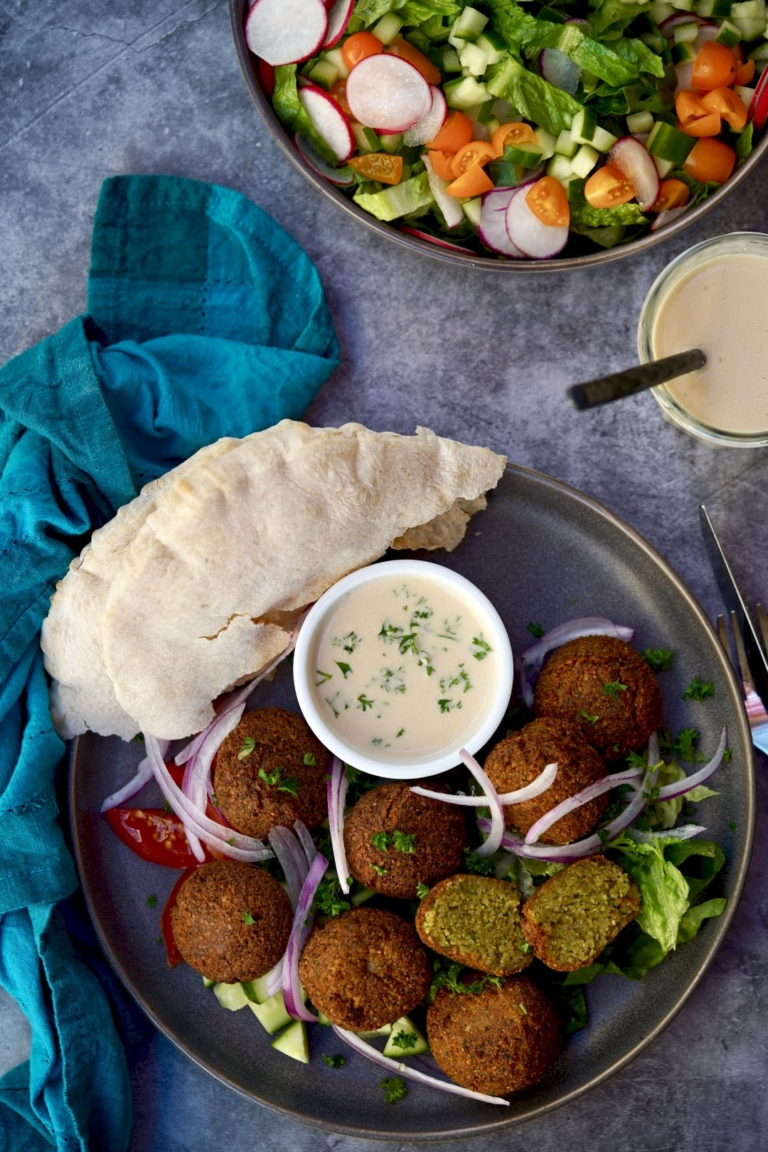
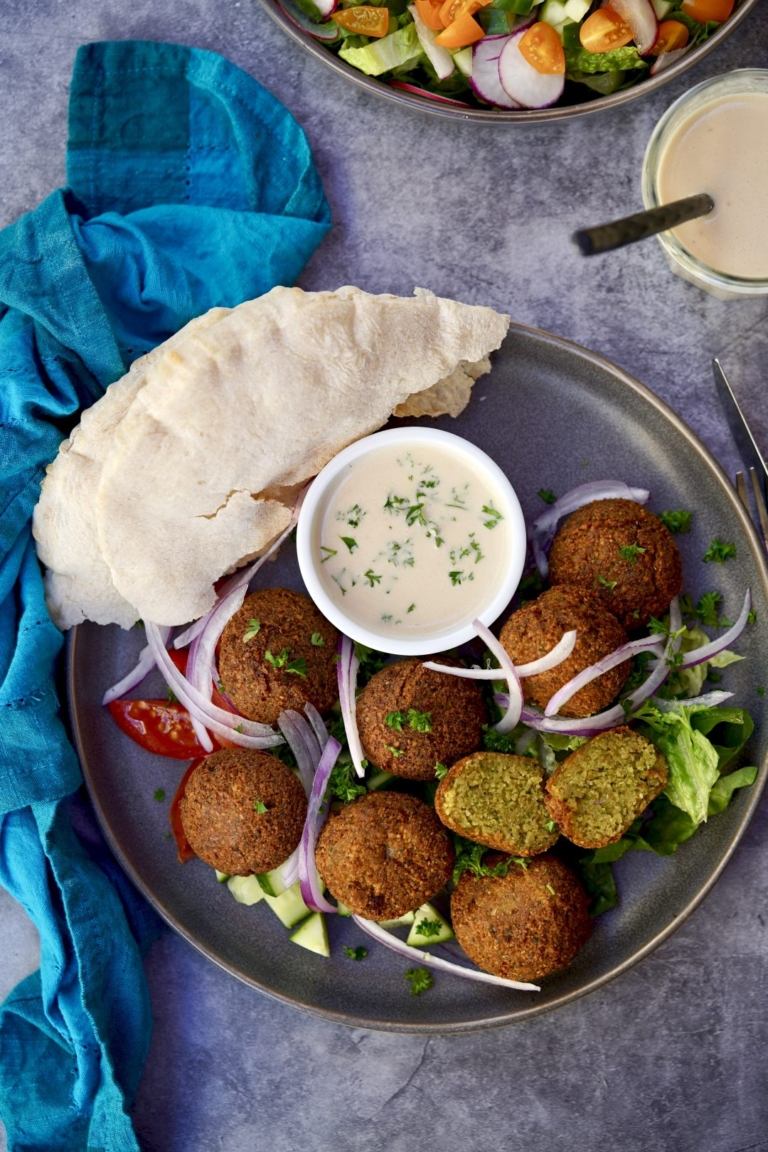
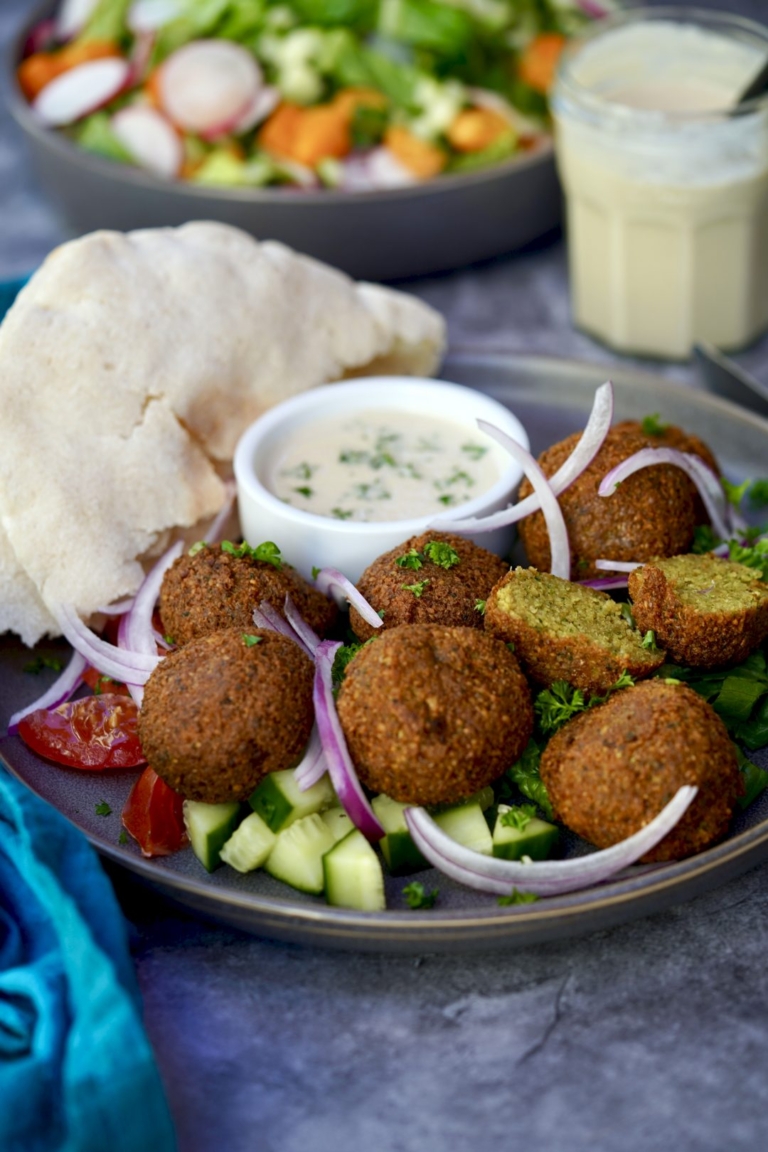
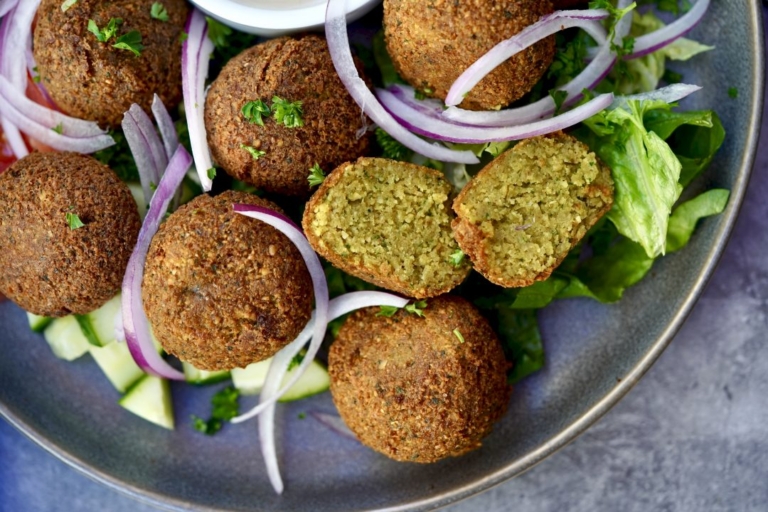


Falafel is a huge favourite in my house too. Yours look fantastic with sesame dressing.
Thanks for writing. It is such a great healthy(ish) dish that’s not as hard to make as people think.